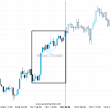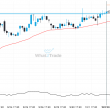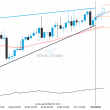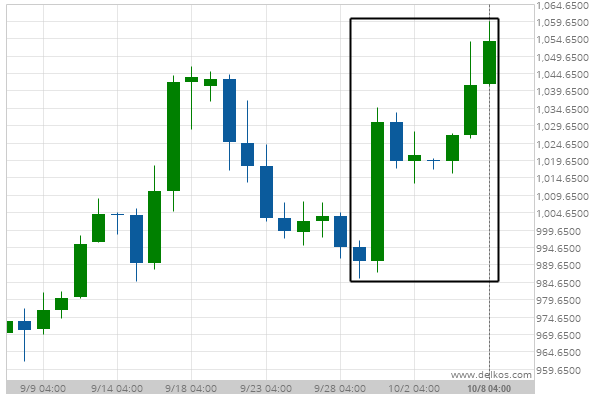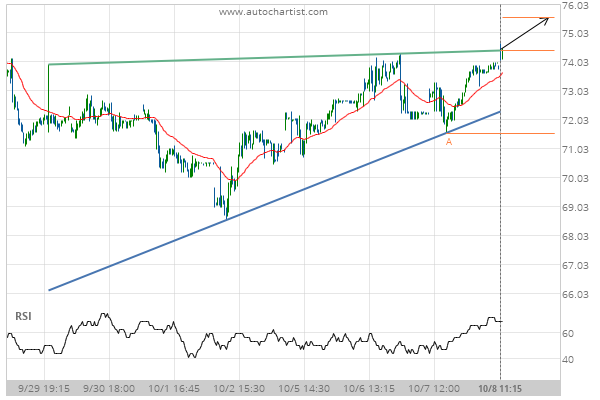Some forex traders use the same trading strategy for all currencies, while others use entirely different strategies depending on the currency pairs being traded. Or, traders may use multiple strategies with multiple forex pairs, in order to perhaps increase profits while reducing the risk of drawdown resulting from over-concentration on a single strategy.
Expert advisors (EA) make it possible to optimize the input parameters, yet they don’t necessarily make it easier to put separate strategies together into a single system. And, testing may show increased risk from overlapping or correlated drawdowns when disparate forex strategies are merged together.
Using algorithms, a trading system can check currency pairs and perform specific operations according to input parameters. A multicurrency, multi-system EA can be crafted in order to assess all trading strategies side-by-side. This may be helpful in case only a single EA is permitted to access a given account.
It can be challenging to develop a forex trading system that works well across different currency pairs under a variety of conditions. Most of the widely-known systems for multicurrency trading are based on trend-following strategies, such as Donchian-channel breakouts, and are designed to profit from very long-term trends. Yet, a multicurrency strategy must clearly show a winning “edge” over the typical time horizons for forex traders.
For example, in order for a system to work well with both EUR/USD and USD/JPY the signals must have a high likelihood of success in spite of volatility and potential correlation between the two pairs. And, trades must become winners during fairly short time periods. If not, then trading correlated pairs may create a risk of over-concentration and excessive drawdown.
There are many profitable opportunities in trading the four major currency pairs — EUR/USD, GBP/USD, USD/JPY and USD/CHF. I’ve been enjoying good success by using a strategy based on Mathematical Expectation (ME). I use ME to analyze data and spot comprehensive trading opportunities and calculate entry/exit points for trading the four major currency pairs.
Mathematical expectation predicts the likelihood that a forex trade will win
A well-programmed EA can use ME tools to help build systems that work across multiple currency pairs. I’ve helped developed a couple of systems that work in real-time and show long-term profitability through back-testing.
Recently, traders have become more aware of the drawbacks that arise when using data-mining techniques to back-test and fine-tune strategies for forex trading systems. Alternative system-development methods like System Parameter Permutation (SPP) are now available and can help traders avoid the issue of data-mining bias.
If done carefully, SPP or data mining will help build a set of good-quality indicators to generate signals across the four major currency pairs. Then, the expert advisor calculates Mathematical Expectation to see whether the trade is likely to be profitable or not.
Finally, it’s a matter of specifying filters and testing to find precise strategies that consistently result in winning, profitable signals. Entry and exit points are calculated by the mechanical trading system using mathematical expectation adjusted for current volatility.
Calculating the mathematical expectation of success
Mathematical Expectation (ME) is a statistic that measures the greatest temporary profit that a trade experienced the entire time it remained open. It was first popularized under the Optimal-F position-sizing and money-management rules developed by Ralph Vince. The equation is:
Mathematical Expectation = MFE – MAE
The mathematical expectation tool gives multicurrency forex traders a predictive “edge” in developing winning systems. ME is defined according to the concepts of Maximum Favorable Excursion (MFE) and Maximum Adverse Excursion (MAE). ME’s value can be calculated in real time by the mechanical trading system.
Maximum Favorable Excursion is the greatest balance on a favorable trade before a forex trade is closed out, regardless of final closing price during the time period, whether daily, hourly or minutely. MFE is the highest positive balance achieved while the trade was open.
Maximum Adverse Excursion is the largest unrealized or temporary loss during a trade, regardless of whether the trade was closed out as a loser or not. MAE is the lowest negative balance on the trade while it was open.
In order to quantify and analyze the ME from a given forex pair, traders can simply calculate average MFE and average MAE for a large number of past trades. Mathematical Expectation equals Maximum Favorable Excursion minus Maximum Adverse Excursion.
If average MFE is larger than average MAE, then the Mathematical Expectation is positive. The larger the ratio between MFE and MAE for a given currency pair, the more favorable is the outlook for a potential trade.
Multicurrency forex trading strategies based on Mathematical Expectation
When trading EUR/USD, GBP/USD, USD/JPY and USD/CHF with a multicurrency strategy based on the Mathematical Expectation, this metric is usually positive and generally high, and similar among the various currency pairs.
It’s important to avoid evaluating position size, or trade-exit rules or any other parameters while the expert advisor analyzes the entry points. Those parameters can be set independently by the mechanical trading system based on ME adjusted for volatility, as discussed later in this article.
After determining the entry point and trade direction, the mechanical trading system calculates MFE and MAE values generally first at 10 bars beyond the entry price, then 15 bars beyond, then 20 bars beyond the entry price.
In addition to signaling entry points, the ME also shows whether the forex trade’s advantage is best immediately after opening the position, or at some average interval after being in the position.
My simplest multicurrency trading strategy uses daily charts and relies on a combination of three price-based rules, and only a few parameters that use mathematical expectation to predict success.
The rules for long and short trades are as follows:
Trade long (and close out a short trade) when:
Close > Previous Close
Open > Previous Low
Previous Close > Prior Close
Trade short (and close out a long trade) when:
Close < Previous Close
Open < Previous High
Previous Close < Prior Close
This system reverses the trade when the signal changes. So, if the system has a “long” position open when a “short” signal is received, the system will close the long position and instead go short. Likewise, if the system has an open “short” position when a “long” level is received, it will close the short and immediately go long.
Another parameter of this system is the stop-loss trigger which is set at a value just slightly more than the fifteen-day or twenty-day average true range (ATR). This value is updated each time a new signal is received in the same direction.
Nevertheless, if there are new signals in the same direction, my system does not add new positions, since I’ve found that drawdowns outweigh additional profits when doing so.
Finally, regarding position size the system allocates a maximum 2% of account equity to a single high-ME trade. If there are multiple signals in several currency pairs, yet the ME calculations are showing correlation among the signals, the total position sizes will be no more than 2% of equity.
Trading results
This simple multicurrency forex trading system has shown decent results in real trading, and back-testing over a twenty-year period shows that it would have enjoyed profitable results for at least sixteen out of the twenty years tested. It has shown a reward-to-risk ratio of about 1.7 and winner percentage around 45%, while the profit factor was nearly 1.4.
Still, the drawdowns can be lengthy – The longest drawdown seen under back-testing was more than 1000 days. The ratio of profit-to-drawdown when using this strategy is similar to that of buying-and-holding stocks, and during back-testing the ratio was about 0.35 with a total return of more than 500% during a twenty-year back-test.
Risk management for multicurrency trading strategies using ME
By knowing the average MFE and MAE values, a forex trader can program a multicurrency mechanical system to exit a trade at a profit target or stop-loss point determined by adding a calculated number of pips beyond the Maximum Favorable Excursion or Maximum Adverse Excursion values.
On average, in order to win over time the forex trading system must reach the profit goal more often than it touches the stop-loss exit level.
For example, if my system is seeing an average MAE of 35 pips and an average MFE of 55 pips, there is a tradable opportunity. The profit target may be projected for 50 pips, which is 5 pips less than MFE, and the stop-loss exit can be set at 30 pips, which is 5 pips beyond the MAE.
Regarding system design, it’s important to program the trading system to define profit targets and stop-loss points according to volatility instead of setting a fixed number of pips.
Volatility helps determine exit points for multicurrency trading
As mentioned earlier, a mechanical trading system can easily use Average True Range (ATR) as a volatility-dependent tool to calculate MAE and MFE in order to set exit points. The system determines the entry price plus or minus a percentage of the ATR that is workable according to the ME analysis. To have a large enough sample, I usually set the ATR to calculate the previous 15 or 20 time frames.
For example, during a market when the EUR/USD is moving an average of about 100 pips per day, the system should calculate target profit points and stop-loss points based on current volatility and the analysis of ME.
So, if a trade moves in a favorable direction for 55 pips, and if the current ATR is 85 pips, the move is not reported as 55 pips; instead, the MFE is reported as 64.7% of ATR.
Over time, I’ve seen that the MFE for the four major currency pairs EUR/USD, GBP/USD, USD/JPY and USD/CHF seem to fluctuate around an MFE value of about 60% of ATR, and average MAE around 40% of ATR for the typical entry after 15 time periods.
In order to fine-tune forex trading results according to volatility, the mechanical trading system can set the profit targets and stop-loss points at varying levels. For example, the system may set the profit target exit point at 55% of the ATR value away from the entry point, not at the MFE full value of 60%.
And, volatility may require setting the stop-loss exit points at 45% of ATR value beyond the entry point, not at 40% of ATR. Still, this system is likely to reach target profit levels more often than stop-loss levels, and winners should be larger as long as target profits are set larger than stop-losses.
For all trades, the calculated number of pips for target profits and stop-losses is always based on volatility just at the moment of the trade, as reflected by the ATR.
When a signal arises, the trading system checks the value of current ATR, then calculates the exact number of pips to reach target profit and stop-loss levels.
As an example, assume there is a signal to go long in EUR/USD,and the current ATR is at 100 pips. So, the target profit point will be at 55 pips over the entry price (55% of the ATR value). And, the stop-loss will be at 45 pips under the entry price (45% of the ATR).
A few more thoughts about Mathematical Expectation
The mathematical expectation is generally lower for “short” trades, and some traders have seen ME increase by as much as eighteen bars after the open, then decay during price swings by as much as eighty bars after open.
For “long” trades, the ME generally has a longer lifespan, with values that may increase quickly up to the thirtieth time period, and then continue slowly onward up to about 75 time periods. Using this system, my average trade duration is about 25 days.
The best upside when trading EUR/USD, GBP/USD, USD/JPY and USD/CHF seems to accrue by about 30 time periods. If the favorable movement continues onward past that average point, then it’s likely that some sort of fundamental bias in the market is prolonging the move.
In summary, this basic multicurrency forex trading strategy takes advantage of a positive, high ME shared across the four major currency pairs. The entries, profit targets and stop-loss points are all based on ME.
When the Mathematical Expectation indicators are predicting success, the four major currency pairs — EUR/USD, GBP/USD, USD/JPY and USD/CHF – can be successfully traded either together or separately.
Have you tried ME in your trading?

